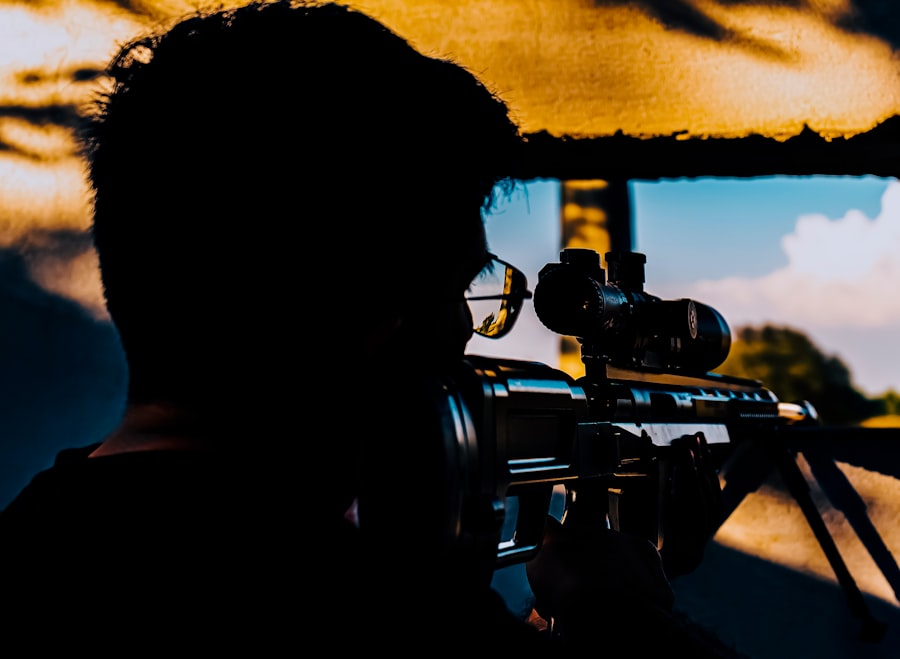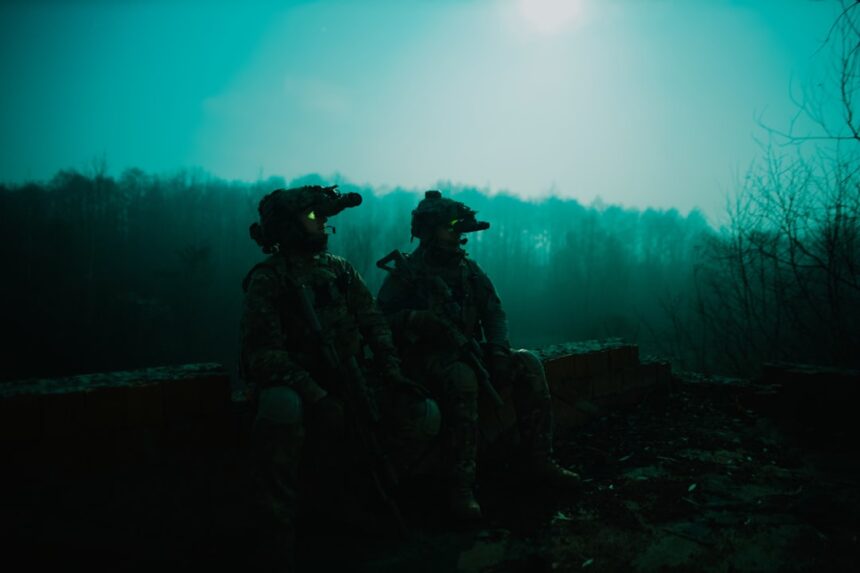The inception of war films can be traced back to the early 20th century, a time when cinema was still in its infancy. The first significant war film, “The Battle of the Somme,” released in 1916, provided audiences with a stark and unfiltered view of the horrors of World War
This documentary-style film combined real footage with staged scenes, creating a powerful narrative that resonated with viewers. It marked a pivotal moment in cinematic history, as filmmakers began to recognize the potential of film as a medium for storytelling about conflict. The raw emotions captured on screen not only informed the public about the realities of war but also served to galvanize support for the troops.
As the world plunged into World War II, the war film genre evolved further. Hollywood began producing a plethora of films that depicted the heroism and sacrifice of soldiers, often glorifying their efforts in a bid to boost national morale. Movies like “Casablanca” and “Saving Private Ryan” emerged as cultural touchstones, blending romance and drama with the backdrop of war.
These films not only entertained but also educated audiences about the complexities of global conflict, shaping public perception and understanding of the war. The birth of war films thus laid the groundwork for a genre that would continue to evolve and reflect societal attitudes toward warfare.
Key Takeaways
- War films emerged in the early 20th century and gained popularity during World War II, reflecting the cultural and political climate of the time.
- During wartime, war films were used as a tool for propaganda and patriotism, aiming to boost morale and support for the war effort.
- The 1950s and 1960s marked the golden age of war films, with iconic movies portraying heroism and sacrifice in the face of conflict.
- The Vietnam War and the anti-war movement had a significant impact on war films, leading to a shift in portrayal and a more critical examination of war.
- From the 1980s to the present, blockbuster war films have dominated the genre, utilizing advanced technology and special effects to depict warfare on a grand scale.
Propaganda and Patriotism: How war films were used to boost morale during wartime

During times of conflict, war films have often served as powerful tools for propaganda, designed to inspire patriotism and bolster public support for military efforts. Governments recognized the influence of cinema and harnessed it to create narratives that painted their armed forces in a heroic light. In the United States, for instance, films like “Why We Fight,” a series produced by Frank Capra during World War II, aimed to educate soldiers and civilians alike about the reasons behind the war.
These films were instrumental in fostering a sense of unity and purpose among the populace, reinforcing the idea that their sacrifices were necessary for the greater good. Moreover, war films often depicted an idealized version of soldiers and their experiences, emphasizing bravery, camaraderie, and sacrifice. This portrayal not only served to uplift spirits but also encouraged enlistment and support for war efforts.
The emotional resonance of these films created a shared sense of identity among viewers, who were invited to see themselves as part of a larger narrative. As such, war films became an integral part of the cultural landscape during wartime, shaping public opinion and reinforcing nationalistic sentiments.
The Golden Age of War Films: The 1950s and 1960s
| Film Title | Director | Release Year | IMDb Rating |
|---|---|---|---|
| The Bridge on the River Kwai | David Lean | 1957 | 8.1 |
| The Great Escape | John Sturges | 1963 | 8.2 |
| Lawrence of Arabia | David Lean | 1962 | 8.3 |
| Paths of Glory | Stanley Kubrick | 1957 | 8.4 |
The 1950s and 1960s are often regarded as the golden age of war films, characterized by a surge in production and a diversification of themes. This era saw the emergence of iconic films such as “The Bridge on the River Kwai” and “Paths of Glory,” which not only entertained but also challenged conventional narratives about warfare. Filmmakers began to explore the psychological toll of conflict on soldiers, delving into themes of morality, sacrifice, and the futility of war.
These films often presented a more nuanced view of military life, moving away from simplistic portrayals of heroism. Additionally, this period marked a shift in audience expectations. Viewers sought more complex narratives that reflected the realities of modern warfare rather than glorifying it.
The rise of anti-war sentiment during this time influenced filmmakers to create works that questioned authority and examined the consequences of conflict. As a result, war films became vehicles for social commentary, prompting audiences to reflect on the implications of war in their own lives. This evolution in storytelling not only enriched the genre but also solidified its place in cinematic history.
Vietnam and the Anti-War Movement: The impact of real-life conflict on war films
The Vietnam War had a profound impact on the landscape of war films, as it coincided with a significant shift in public sentiment towards military engagement. Unlike previous conflicts, Vietnam was marked by widespread protests and a growing anti-war movement that permeated American society. Filmmakers responded to this cultural upheaval by creating films that depicted the harsh realities of combat and its psychological effects on soldiers.
Movies like “Apocalypse Now” and “Full Metal Jacket” offered unflinching portrayals of the chaos and brutality of war, challenging traditional narratives that glorified military service. These films not only reflected the disillusionment felt by many Americans but also served as a critique of government policies and military strategies. The stark imagery and haunting soundscapes created by directors like Francis Ford Coppola and Stanley Kubrick resonated deeply with audiences, prompting them to question the morality of U.S.
involvement in Vietnam. As such, war films during this era became powerful vehicles for social change, encouraging viewers to engage with complex issues surrounding conflict and its consequences.
The Rise of Blockbuster War Films: From the 1980s to the present

The 1980s marked a significant turning point for war films as they transitioned into blockbuster territory, characterized by high budgets, star-studded casts, and grandiose storytelling. Films like “Platoon” and “Saving Private Ryan” not only achieved commercial success but also garnered critical acclaim for their realistic depictions of warfare. This era saw filmmakers employing cutting-edge technology and special effects to create immersive experiences that captivated audiences worldwide.
The combination of gripping narratives and stunning visuals elevated war films to new heights, solidifying their status as major players in Hollywood. Moreover, this period witnessed a resurgence in patriotic themes as filmmakers sought to rekindle national pride following decades of disillusionment stemming from Vietnam. Movies like “Top Gun” celebrated military prowess while simultaneously appealing to a sense of adventure and heroism.
However, even within this blockbuster framework, there remained an undercurrent of complexity as filmmakers grappled with the moral implications of warfare. The genre continued to evolve, reflecting changing societal attitudes while maintaining its appeal as a source of entertainment.
War Films and Cultural Representation: How different cultures and perspectives are portrayed in war movies
War films have long been a medium through which various cultures and perspectives are represented, yet this representation has often been fraught with challenges. Historically, many war films have centered on Western narratives, particularly those from American or British viewpoints. This focus has sometimes led to oversimplified portrayals of non-Western cultures or an absence of their stories altogether.
However, as globalization has increased and diverse voices have gained prominence in cinema, filmmakers have begun to explore more nuanced representations of conflict. Films like “City of God” and “The Hurt Locker” have sought to depict the complexities of warfare from different cultural perspectives, offering insights into how various societies experience conflict. These narratives challenge dominant paradigms by highlighting the human cost of war across different contexts.
This evolution in cultural representation within war films not only enriches storytelling but also fosters greater empathy among viewers.
War Films and Technology: The evolution of special effects and CGI in depicting warfare
The evolution of technology has played a crucial role in shaping how war is depicted on screen. From practical effects used in early cinema to advanced CGI techniques employed in contemporary filmmaking, technological advancements have transformed the visual landscape of war films. In earlier decades, filmmakers relied on practical effects such as miniatures and pyrotechnics to create battle scenes that captivated audiences’ imaginations.
However, as technology progressed, so too did filmmakers’ ability to depict warfare with unprecedented realism. The introduction of CGI has revolutionized how filmmakers approach battle sequences, allowing for breathtaking visuals that were once unimaginable. Films like “300” and “Dunkirk” showcase how technology can enhance storytelling by immersing viewers in dynamic combat scenarios.
However, this reliance on technology also raises questions about authenticity and emotional resonance. While stunning visuals can captivate audiences, they must be balanced with compelling narratives that honor the human experiences behind warfare. As technology continues to evolve, filmmakers face both opportunities and challenges in their quest to depict conflict authentically.
The Controversy of War Films: Criticisms and debates surrounding the portrayal of war in cinema
War films have long been subjects of controversy and debate regarding their portrayal of conflict and its implications for society. Critics argue that many films tend to glorify violence or oversimplify complex geopolitical issues, leading audiences to adopt skewed perceptions of warfare. For instance, some argue that movies like “American Sniper” present an overly romanticized view of military service while neglecting the psychological toll it takes on soldiers and civilians alike.
Such criticisms highlight the responsibility filmmakers bear in shaping public understanding of war. Moreover, debates surrounding representation often arise when discussing how different cultures are depicted in war films.
As audiences become more discerning about media consumption, there is an increasing demand for authenticity and diversity in storytelling. Filmmakers must navigate these complexities while striving to create compelling narratives that resonate with viewers without sacrificing accuracy or sensitivity.
War Films and Awards: The recognition and accolades given to outstanding war movies
War films have consistently garnered recognition within prestigious award circuits, reflecting their impact on both audiences and critics alike. The Academy Awards have celebrated numerous war-themed films over the years, with titles like “Platoon,” “Saving Private Ryan,” and “1917” receiving accolades for their artistic achievements. These awards not only acknowledge exceptional filmmaking but also highlight the cultural significance of war narratives within cinema.
Moreover, awards serve as platforms for discussions surrounding representation and storytelling within the genre. As filmmakers continue to push boundaries and explore diverse perspectives on conflict, recognition from industry bodies can help elevate underrepresented voices within war cinema. This acknowledgment fosters an environment where innovative storytelling can thrive while encouraging audiences to engage with complex themes related to warfare.
War Films and Historical Accuracy: The challenges of balancing entertainment with historical truth
One of the most significant challenges faced by filmmakers is balancing entertainment value with historical accuracy when depicting warfare on screen. While audiences often seek engaging narratives filled with drama and action, there is an inherent responsibility to portray historical events truthfully. Filmmakers must navigate this delicate balance carefully; otherwise, they risk perpetuating myths or misrepresenting key aspects of history.
Films like “Schindler’s List” exemplify how historical accuracy can enhance storytelling while honoring those who lived through significant events. However, other films may take creative liberties that lead to criticism from historians or veterans who feel their experiences have been misrepresented. As audiences become more informed about historical events through various media channels, filmmakers must remain vigilant in their commitment to authenticity while crafting compelling narratives that resonate emotionally.
The Future of War Films: How the genre continues to evolve in response to modern conflicts and societal changes
As society continues to grapple with evolving conflicts around the globe, so too does the genre of war films adapt to reflect these changes. Filmmakers are increasingly exploring contemporary issues such as terrorism, cyber warfare, and humanitarian crises through innovative storytelling techniques that resonate with modern audiences. This evolution signifies a departure from traditional narratives focused solely on battlefield heroics; instead, filmmakers are delving into complex moral dilemmas faced by soldiers today.
Moreover, advancements in technology allow for new forms of storytelling that engage viewers in immersive ways—virtual reality experiences or interactive narratives may soon become integral components within this genre’s evolution. As societal attitudes toward warfare shift further toward empathy-driven narratives emphasizing human experiences over glorified violence, filmmakers will undoubtedly continue pushing boundaries while exploring diverse perspectives on conflict. In conclusion, war films have undergone significant transformations since their inception over a century ago—reflecting changing societal attitudes toward conflict while grappling with complex moral dilemmas inherent within warfare itself.
As filmmakers navigate these challenges moving forward into an uncertain future shaped by modern conflicts—audiences can expect continued innovation within this powerful genre that seeks not only entertain but also provoke thought about our shared humanity amidst chaos.
The history of cinematic warfare is a fascinating subject that delves into how war has been portrayed on the big screen, reflecting societal attitudes and technological advancements over time. For those interested in exploring this topic further, a related article can be found on the website “In the War Room.” This article provides additional insights into the evolution of war films and their impact on audiences. You can read more about it by visiting the following link: In the War Room. This resource offers a comprehensive look at how filmmakers have depicted warfare throughout the decades, highlighting key films and trends that have shaped the genre.
CHECK THIS OUT! 📽️🎞️ Hollywood’s Secret War: How the CIA Rewrote Movies
FAQs
What is cinematic warfare?
Cinematic warfare refers to the portrayal of military conflicts and battles in films, television shows, and other forms of visual media. It often includes depictions of combat, strategy, and the human experience of war.
When did cinematic warfare first appear in film?
Cinematic warfare has been a popular subject in film since the early 20th century. The first war film is often considered to be the 1915 silent film “The Birth of a Nation,” directed by D.W. Griffith, which depicted the American Civil War and Reconstruction era.
How has the portrayal of warfare in cinema evolved over time?
The portrayal of warfare in cinema has evolved significantly over time, reflecting changes in technology, cultural attitudes, and historical events. Early war films often romanticized combat and glorified military heroes, while more recent films have focused on the human cost of war and the moral complexities of armed conflict.
What are some iconic examples of cinematic warfare in film history?
Some iconic examples of cinematic warfare in film history include “Saving Private Ryan” (1998), “Apocalypse Now” (1979), “Platoon” (1986), “Full Metal Jacket” (1987), and “The Bridge on the River Kwai” (1957). These films have had a significant impact on the portrayal of warfare in cinema.
How has cinematic warfare influenced public perception of war?
Cinematic warfare has played a significant role in shaping public perception of war, often influencing attitudes towards military conflict and the experiences of soldiers. It has the power to both romanticize and critique war, and has been used as a tool for propaganda and anti-war activism.




